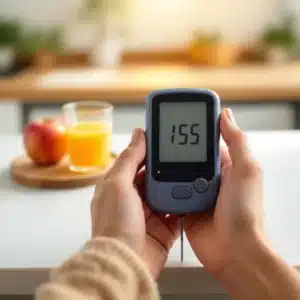10 Proven Ways to Speed Up Nail Fungus Recovery: Find Out When It’s Finally Gone!

Have you ever wondered if the unsightly discoloration on your nails could be something more serious? Nail fungus, a common yet often overlooked condition, affects millions of people in the United States, and understanding its recovery process can make all the difference. In this article, we’ll explore 10 proven ways to speed up nail fungus recovery, providing you with the tools and insights to restore your nail health.
Understanding Nail Fungus
Nail fungus, medically known as onychomycosis, is a fungal infection that affects the nails. It can occur on the fingernails and toenails but is more commonly found on toenails. Understanding the definition, symptoms, common causes, and types of nail fungus is crucial for effective treatment.
Definition and Symptoms
Nail fungus typically begins as a small white or yellow spot under the nail. As the infection progresses, it may cause the nail to thicken, become brittle, or change color. Other symptoms include:
- Crumbling or ragged edges
- A foul odor
- Discomfort or pain in the affected area
Common Causes
Several factors can lead to nail fungus, including:
- Warm and Moist Environments: Fungi thrive in such conditions, making warm showers, swimming pools, and shoes a common breeding ground.
- Nail Trauma: Injuries to the nail can create a path for fungi to enter.
- Compromised Immunity: Conditions that weaken the immune system, such as diabetes, can increase susceptibility.
Types of Nail Fungus
There are several types of nail fungus, each with its unique characteristics:
- White Superficial Onychomycosis: The top layer of the nail is affected, and white patches appear.
- Proximal Subungual Onychomycosis: The infection begins at the base of the nail.
- Distal Subungual Onychomycosis: It starts at the nail’s edge and works its way forward.
- Total Subungual Onychomycosis: The entire nail is affected, and the fungus is present under the nail bed.
When to Seek Professional Help
Nail fungus can be persistent and challenging to treat, so it’s essential to recognize when to seek professional help.
Signs that Require a Doctor’s Visit
While many cases of nail fungus can be managed at home, certain symptoms indicate a need for medical intervention:
- Persistent pain or discomfort
- Nail separation (onycholysis)
- Infection that spreads to the skin
Understanding Treatment Options
Professional treatments for nail fungus often include:
- Oral Medications: Antifungal drugs taken by mouth, such as itraconazole and terbinafine, can be effective.
- Topical Solutions: Medical-grade creams, gels, or lacquers can be applied directly to the affected nail.
- Nail Removal: In severe cases, removing the infected nail might be necessary to allow a new, healthy nail to grow.
Home vs. Professional Treatments
While home remedies can offer relief, professional treatments are often more effective, especially for severe infections. However, combining both methods can lead to the best results.
10 Proven Ways to Speed Up Nail Fungus Recovery
Speeding up nail fungus recovery involves a multifaceted approach. Here are 10 evidence-based methods to help you get back to healthy nails:
1. Proper Hygiene
Maintaining excellent nail care is the first step in any recovery plan. Here are some tips for daily care:
- Trim Nails: Keep nails short and trim.
- File Edges: Smooth out rough edges.
- Soak Feet: In Epsom salts or apple cider vinegar to dislodge fungus.
2. Essential Oils
Essential oils can be a powerful tool in the fight against nail fungus. Some of the best oils include:
- Tea Tree Oil: Known for its antifungal properties.
- Oregano Oil: A strong antifungal agent
- Lavender Oil: Can help soothe affected skin.
Use a carrier oil to dilute before applying.
3. Diet and Nutrition
A well-balanced diet can support recovery and overall health. Foods to boost recovery include:
- Probiotics: Yogurt and kefir can help manage Candida.
- Vitamin E: Found in almonds, this nutrient helps protect nails.
- Garlic: Contains antifungal compounds.
4. Over-the-Counter Remedies
Several OTC products can be effective. Product recommendations include:
- Nail Lacquers: Formulated with antifungal agents, such as ciclopirox.
- Cream Treatments: Look for options with clotrimazole.
5. Home Remedies
Natural solutions can complement professional treatments. Consider:
- Vinegar Soaks: Soak affected nails in white vinegar.
- Hydrogen Peroxide: A dilute solution can help disinfect.
- Baking Soda Paste: Applied to the affected area can help reduce moisture.
6. Lifestyle Changes
To avoid reinfection, consider these lifestyle adjustments:
- Wear Breathable Footwear: Choose shoes that allow air to circulate.
- Avoid Public Pools: Fun


